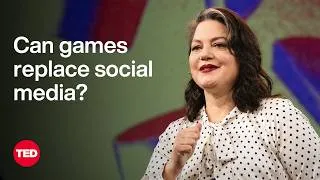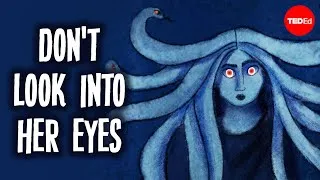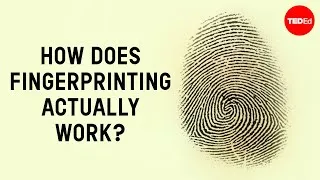请双击下面的英文字幕来播放视频。
翻译人员: Xiang Li
校对人员: Yuwei Wu
00:07
Every color you see in front
of you can be found in nature.
0
7670
3379
你眼前看到的所有颜色
都能在自然界中找到。
00:11
Some plant, animal, or mineral
bears almost every hue imaginable.
1
11049
4295
植物、动物或者矿物质
让任何色彩都得以想象。
00:15
But which of these colors are you
least likely to see in the natural world?
2
15762
4296
但是,哪种颜色是你最难在
自然界中看到的呢?
00:20
There are two factors that drive
the rarity of color in nature:
3
20767
3586
有两个因素使一些颜色
在自然界中变得很稀有:
00:24
physics and evolution.
4
24687
2002
物理因素和生物进化因素。
00:27
Let’s start with physics.
5
27023
1585
我们从物理因素开始讲。
00:29
Colors are generated when wavelengths
of light interact with objects,
6
29859
3962
色彩是由各种波长的光与物体
互相作用而产生的。
00:33
and most of the colors
you’ve seen outside a screen
7
33821
2461
而大多数你在屏幕外看到的颜色
00:36
were produced in one of two ways.
8
36282
2127
是由两种方式的其中一种产生的。
00:38
In absorption-based colors,
9
38409
1877
对于以吸收光为基础的颜色,
00:40
certain wavelengths are absorbed
by an object, while others are not.
10
40286
4213
某种特定波长的光被物体
所吸收,而其他的不会。
00:44
The result is a matte final color
generated by these leftover light waves.
11
44624
4504
结果是未吸收的光波产生了一个
哑光的最终颜色。
00:49
Most naturally occurring colors
fall into this category,
12
49462
3045
大多数自然产生的颜色
都是这种方式,
00:52
including those of many fruits
and flowers.
13
52507
2252
包括各种水果和花朵。
00:55
Plants are full of compounds called
pigments that absorb light waves
14
55301
3420
植物有一种丰富的色素化合物用于
吸收光波,一部分光波用于光合作用,
00:58
as part of photosynthesis,
15
58721
1627
01:00
the process by which
they convert sunlight into energy.
16
60348
2919
它们利用光合作用将阳光转化为能量
01:03
While different plants have evolved
different pigments
17
63601
2586
而不同的植物进化出了不同的色素
01:06
that result in different colors,
18
66187
1835
使它们展现出不同的颜色
01:08
higher energy wavelengths are more easily
absorbed than lower energy ones.
19
68106
4879
高能量的波长比低能量的波更容易被吸收。
01:13
And blue light has some
of the highest energy wavelengths
20
73277
2711
而蓝光在可见光光谱中
具有最高能量的波长
01:15
in the visible spectrum.
21
75988
1460
01:17
Numerous pigments have evolved
to absorb blue light,
22
77657
2919
大量的色素参与了蓝光的吸收.
01:20
including chlorophyll, which absorbs blue
and red wavelengths
23
80576
2920
包括叶绿素.
通过吸收蓝波和红波
来产生自然界标志性的绿色。
01:23
to produce nature’s trademark green.
24
83496
2210
01:26
However, green light is still
fairly energetic,
25
86374
3128
但是,绿光仍然是相当有能量的,
01:29
and the most common class of pigments
evolved to absorb these wavelengths
26
89502
3712
也是最常见的被色素吸收的光波。
01:33
as well.
27
93214
1001
01:34
There are over 1,100 types
of carotenoids,
28
94549
4045
有超过 1100 种类胡萝卜素,
01:38
pigments which absorb high energy
blue and green light,
29
98594
3504
这是一种吸收高能量的蓝光和绿光,
01:42
while leaving behind the lower energy
red and yellow light.
30
102098
3670
而留下低能量的红、黄光的色素。
01:46
While carotenoids are present
in most green plants,
31
106227
2836
然而,类胡萝卜素
在大多数绿色植物中都有,
01:49
they only become visible each fall
when chlorophyll gets broken down
32
109063
4379
它们只有在叶绿素
都分解掉之后才能看见
01:53
to save energy for the winter.
33
113442
2044
从而为度过冬天保存能量。
01:55
But whether they’re working alone
or side by side,
34
115820
2836
但是无论它们是单独工作,
还是一起工作
01:58
these pigments absorb
blue light in virtually all plants.
35
118656
3837
这些色素几乎在
所有的植物中都吸收蓝光。
02:02
Even fruits and flowers that appear blue
36
122577
2502
甚至那些看上去是蓝色的水果和鲜花
02:05
actually have pigments
that are red or purple,
37
125079
2836
实际上是含有红色或紫色的色素,
02:07
and only truly turn blue
under specific chemical conditions.
38
127915
3963
只有在特定地化学条件下
才会真正转变为蓝色。
02:12
So, is blue the rarest color
in nature?
39
132879
3420
那么,自然界
最稀有的颜色是蓝色吗?
02:16
Not quite.
40
136799
1168
不太是。
02:18
Absorption is just one of the two
main ways light generates color.
41
138426
4463
吸收光只是光产生
色彩的两种方式之一。
02:23
In the second method, some wavelengths
are scattered and amplified—
42
143306
4129
在第二种方式中,
一些波长的光会散射或者增强,
02:27
overpowering the others to determine
an object's final color.
43
147435
3462
从而压倒其他光波,
来决定物体的最终颜色。
02:31
These structural colors occur
44
151606
2252
这些结构性的颜色产生
02:33
because some objects around us are made
of microscopic particles
45
153858
3545
是因为我们身边的一些物体是由
许多微小颗粒组成的
02:37
which can form nanostructures
that interfere with visible light.
46
157403
4171
这些微小颗粒可以形成
干扰可见光的纳米结构。
02:42
For example, this feather has
no blue pigments in it.
47
162158
3920
例如,这片羽毛当中
并没有蓝色色素。
02:46
But when light strikes it,
the electrons within its nanostructure
48
166078
4088
但是当光照射它时,
它的纳米结构中的电子
02:50
vibrate at the same frequency
as the weight.
49
170166
3378
会以相同频率振动,
像波浪一样。
02:53
This makes the particles send
out a new wave with the same frequency,
50
173544
4338
这使这些微粒发送了一种
有相同频率的新波,
02:57
starting a chain reaction that amplifies
and scatters blue light.
51
177882
4296
形成了扩大和
散射蓝光的一连串反应。
03:03
Nanostructures of various shapes and sizes
scatter different wavelengths,
52
183387
4129
各种各样结构和大小的纳米结构
散射不同波长的光,
03:07
but they typically scatter high-energy
wavelengths most easily—
53
187516
4046
一般而言散射高能量的波长
是最容易的——
03:11
making blue
the most common structural color.
54
191562
3837
这使蓝色成为
最常见的一种结构性颜色。
03:16
Meanwhile, low-energy wavelengths
like red are only weakly scattered.
55
196108
4255
同时,低能量波长的光,
如红光,只有很微弱的散射。
03:20
Even when something evolves
specific nanostructures
56
200780
2794
即使有一种生物进化出了
特别的纳米结构
03:23
that strongly scatter red light
57
203574
1752
可以强烈散射红光
03:25
they still resonate
with other wavelengths,
58
205326
2336
这些红光也会与其他波长产生共振,
03:27
only appearing red at some angles
of illumination and observation.
59
207954
4212
只有在一些特别的观察
和照射的角度才会展现红色。
03:32
This gives us two contenders
for nature’s rarest color:
60
212667
3503
现在自然界中最稀有的颜色
有了两个竞争者:
03:36
absorption-based matte blues
and structural iridescent reds.
61
216170
4379
吸收光为基础的哑光蓝色
和结构性闪烁红色。
03:41
Between these two,
structural reds are much rarer.
62
221008
3796
这两者中,结构性红色更加稀有。
03:45
Only a handful of animals and rocks
scatter red light
63
225012
3504
只有一小部分动物和矿石散射红光
03:48
and none of them scatter
red light exclusively.
64
228516
2544
并且没有一种物体单独散射红光。
03:51
But since red and blue are rare
in one way and common in another,
65
231060
4713
既然红色和蓝色都在一种方式中稀有
而在另一种方式里很常见,
03:55
we actually end up seeing
both colors quite often.
66
235773
3212
所以我们事实上
经常可以看见这两种颜色。
03:59
So what color is least likely
to be generated
67
239944
2878
所以到底哪种颜色
是结构性方式和吸收光方式
都最难产生的呢?
04:02
in structural and absorption-based forms?
68
242822
3170
04:06
The answer is violet.
69
246409
2294
答案是 蓝紫色。
04:08
Not to be confused with purple, which is
just a combination of red and blue light,
70
248911
4213
不要和紫色弄混,
紫色是一种红光和蓝光的结合,
04:13
violet occupies a small portion
of the visible light spectrum.
71
253124
4421
而蓝紫色只在可见光
光谱中占有很小的比例。
04:17
There are only a few nanostructures
precise enough
72
257920
2711
只有极少的足够精细的纳米结构
04:20
to exclusively scatter violet light.
73
260631
2836
可以单独散射出蓝紫色的光。
04:23
And violet wavelengths are even
more energetic than blue ones,
74
263467
3462
并且,蓝紫色的光波
甚至比蓝色光波更为高能,
04:27
making them likely to be absorbed
by pigment.
75
267179
2294
使它更容易被色素吸收。
04:30
So if you ever stumble
onto the iridescent violet wings
76
270224
3837
所以,如果你偶然遇到
紫色帝王蝶闪烁的紫色翅膀,
04:34
of a purple emperor butterfly,
77
274061
2544
04:37
take a second to appreciate
one of nature’s rarest spectacles.
78
277398
5047
花些时间去好好欣赏
这自然界最稀有的光谱之一。
New videos
关于本网站
这个网站将向你介绍对学习英语有用的YouTube视频。你将看到来自世界各地的一流教师教授的英语课程。双击每个视频页面上显示的英文字幕,即可从那里播放视频。字幕会随着视频的播放而同步滚动。如果你有任何意见或要求,请使用此联系表与我们联系。







